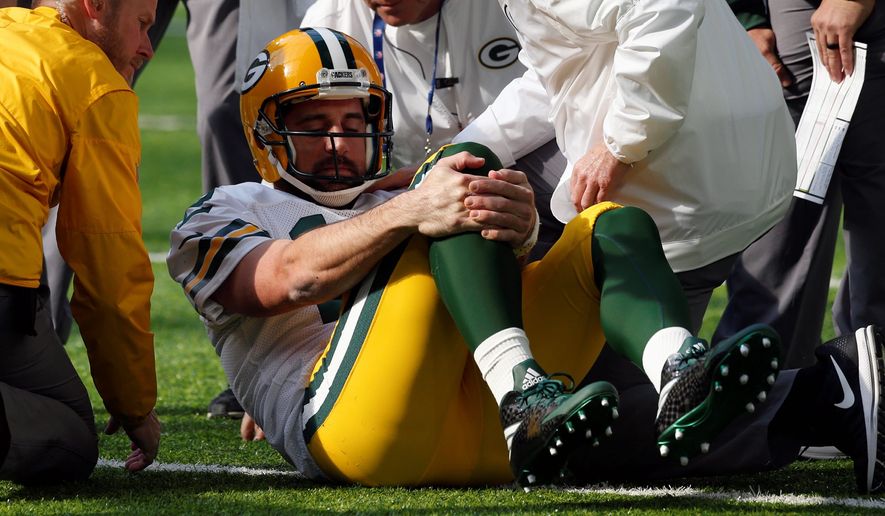The NFL is approaching the playoffs looking for a ratings turnaround after a year of record-low television numbers.
Outcry over players protesting by taking a knee during the national anthem isn’t helping, but it’s only one of several reasons fans are turning away from professional football, media analysts say.
Injuries to marquee players such as Green Bay Packers quarterback Aaron Rodgers, teams with losing records in the nation’s largest media markets such as New York and Chicago, a glut of prime-time games, and viewers with other options have also taken a toll.
“I’d be stunned if any single factor contributed more than 2 percent to the ratings decline,” said Andrew Billings, director of the University of Alabama’s Sports Communication program.
But the decline is noticeable.
In week 15 of the NFL season, average television viewership fell 9 percent from the same week last season, according to Nielsen, which measures television audience sizes. Week 14 was 8.4 percent lower compared with 2016.
All told, the NFL is averaging 15 million viewers per game, compared with 16.6 million last year, Nielsen reported.
The anthem protests plagued the league all season long. They also escalated into a feud between the NFL and President Trump, who threatened to end the use of tax-exempt municipal bonds to build stadiums.
An early version of the Republican tax bill eliminated this perk for sports leagues, which a Brookings Institution study estimates to cost the federal government $3.7 billion in lost tax revenue. However, the final version of the bill, which Mr. Trump signed Friday, preserved the stadium construction tax breaks.
“The protests are the weirdest thing to measure,” Mr. Billings said. “There are a whole lot of people who say the protests keep them from watching, yet it is hard to fathom people are not watching their favorite sport because of something that is not even televised.”
Tumbling ratings are reflected at the national and local levels, where 25 teams are coming in lower than last year, according to Nielsen. In New York, the nation’s largest media market, ratings for the Giants are down 7 percent and Jets ratings have plummeted 37 percent. Viewership of the Dallas Cowboys has declined by 7 percent.
All three teams have struggled on the field this year. The Giants and Jets both occupy last place in their respective divisions, and the Cowboys, after having gone 13-3 in 2016, lost Sunday at home to the Seattle Seahawks, snuffing out their last playoff hopes.
Tom Richardson, a former NFL executive who teaches digital media at Columbia University’s Sports Management graduate program, said too many prime-time games have worn out fans’ appetite for football.
The addition of Sunday and Thursday night games, along with the traditional Monday night game, means prime-time games are no longer the events they once were.
“There is must too much product,” he said. “There is a massive amount of football on television, and it’s not as scarce as it used to be.”
One external factor the league can’t control is cord-cutting among younger viewers. More than 22 million viewers will have forsaken cable, satellite and network television this year, a 33 percent increase from 2016, according to research firm eMarketer.
The NFL has tried to adjust to the change by making game highlights available on social media services such as Snapchat. But it still means fewer eyeballs in front of the TV, avoiding the advertisers who pay heavily to have their commercials seen during NFL games.
Despite the league’s ratings challenges, Mr. Bilings believes the sport will not only endure, but also thrive. He said the sport is still popular and that some more recent problems, such as the protests, will be distant memories in a few years.
“I see it stabilizing,” he said. “In 10 years from now, it will survive the ratings issue and adjust to a new level of normal and their new normal is rosier than any other sport.”
• Jeff Mordock can be reached at jmordock@washingtontimes.com.




Please read our comment policy before commenting.